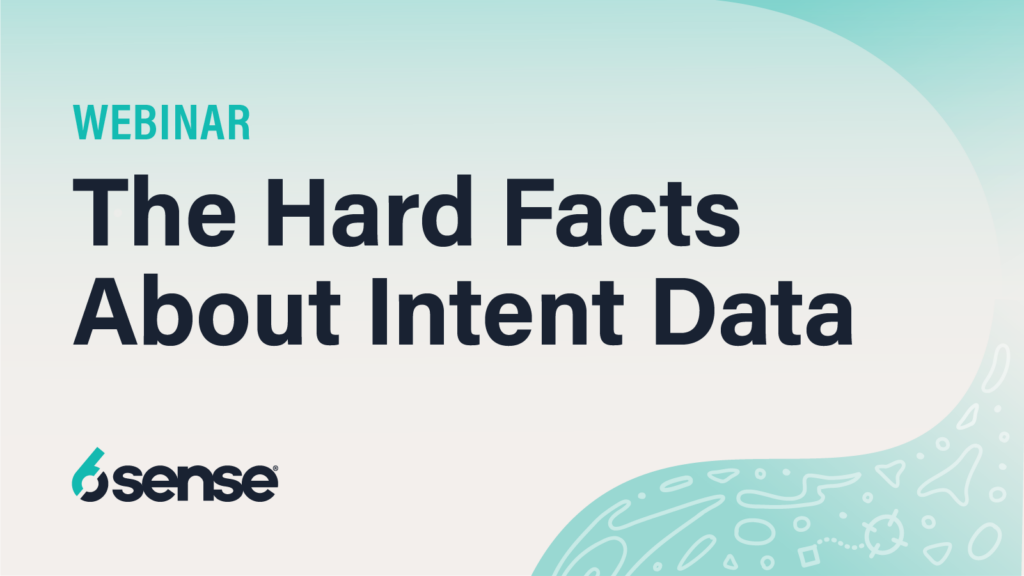In a 2022 survey carried out among marketing experts worldwide, 62% of respondents said they believed it was important to be “always on” for their customers.
You’ve probably heard the phrase “always on,” but you might not have a clear idea of what it means. Always-on marketing is a strategy in which a brand continuously engages its audience across various platforms and channels, aiming to always be present and relevant with every touchpoint.
This approach enhances brand recognition and fosters long-term customer relationships.
A major — but often overlooked — part of remaining relevant to customers over time involves shifting messaging to match the current stage of their buying journey. And that sort of thing is technically impossible to guess … but it’s possible to be pretty darn certain with predictive analytics.
It’s also easy to reach audiences with hyper-targeted multichannel ad campaigns at scale when you use a B2B digital advertising tool like the one offered by 6sense.
We use it ourselves to run always-on journey-based ads. You can learn a bit about it in the video below or read on to learn how we drive account-based marketing success for ourselves — and how your organization can, too.
Intent Keywords and Tailored Ads
At the heart of this approach is the emphasis on intent keywords. These are the terms that potential customers frequently search for, indicating their interest or need in a particular area that aligns with a solution you offer.
For example, “ABM” or “account-based marketing” is a major intent keyword for 6sense. By focusing on intent keywords, businesses can ensure that their advertising efforts are directly aligned with what their target audience is actively seeking.
Intent keywords also play a crucial role in crafting messaging for each buying stage, since interests and needs shift as buyers move along the buying journey. Here’s how intent keywords relate ad messaging for the different buying stages:
Awareness
In this stage, potential customers are just beginning to recognize a need or problem they have. Intent keywords at this stage often reflect general questions related to the problem. Messaging that addresses the needs and pain-points reflected by awareness-stage keywords helps businesses establish themselves as a trusted source of information and build brand awareness.
For example, a 6sense customer in the awareness stage might look up “reach sales quota” or “improve lead quality.”
Consideration
By this stage, potential customers have identified their problem and are actively researching possible solutions. Intent keywords become more specific. Ad messaging should promise educational resources that will help buyers consider their options and position their product or service as a viable solution.
In the case of 6sense, keywords to target ads for include “B2B marketing tools” or “account-based marketing software.”
Decision
Potential customers who have reached this stage have narrowed their vendor options and are moving closer toward making a purchase decision. Intent keywords at this stage often include terms like “buy,” “pricing,” or “reviews,” or in our case, “6sense features” or “6sense vs competitors.”
Ads that target these keywords keep your brand top of mind as they navigate the decision-making process and should lead to content that leaves them confident that your solution is their best option.
Purchase
Potential customers have reached the final stage of the buying journey and are ready to make a purchase decision. Ads at this stage can effectively guide potential customers towards completing the transaction and converting them into satisfied customers.
For example, intent keywords for 6sense customers at the purchase stage like “6sense pricing” or “6sense implementation process” can be targeted with ads that acknowledge this readiness to buy and offer resources that stakeholders need to solidify their purchase decision.
Here are some real-world examples of always-on digital ads we’ve run based on intent keywords and buying journey stage:

Beyond Clicks: Building Awareness and Engagement
While clicks are a measure of engagement, the primary goal of display advertising is to build awareness. The ads serve as digital billboards, subtly embedding the brand and its offerings in the minds of potential customers.
This awareness-building is crucial, as it lays the groundwork for future engagement. Even if it doesn’t immediately lead to a click or purchase, always-on ads keep the brand top-of-mind for whenever the customer is ready.
Continuous Optimization and Refreshing
To maintain relevance and engagement, always-on journey-based advertising requires regular updates. Ad copy, content, and sometimes even the keywords should be refreshed quarterly. This ensures that the strategy remains dynamic, adapting to changes in customer interests and trends in search behavior.
While some terms may remain consistently relevant for your organization, like ABM does for 6sense, the approach to presenting these topics in advertising should evolve to keep the content fresh and engaging.
Wrapping Up
By adopting an always-on journey-based advertising strategy, businesses can create a robust framework that supports the progression of accounts from initial awareness to decision-making and conversion.
Through continuous optimization and a deep understanding of the customer’s needs and stage of the buying journey, businesses can unlock the full potential of digital advertising and drive growth and success.






